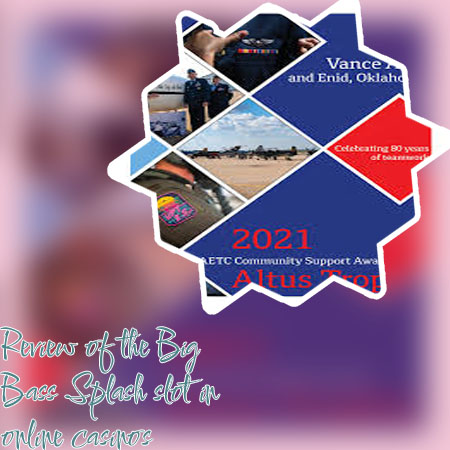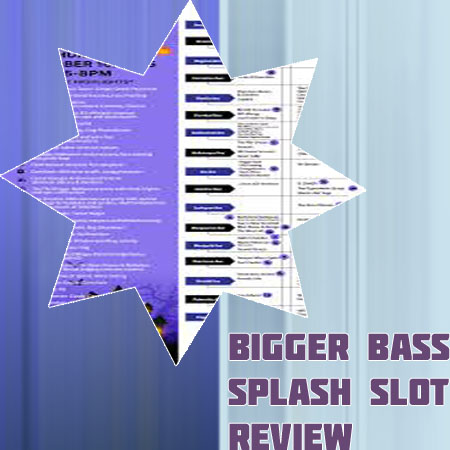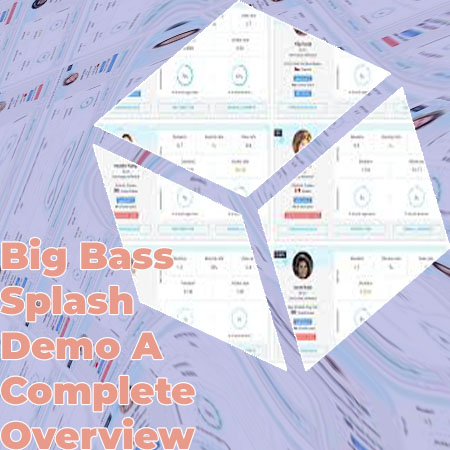Demo slot big bass splash
What users gain from demo slot big bass splash
Trying the fishing-themed demo before spending real funds gives users a safe space to learn game rhythm, symbol values, and how features chain together. You can explore how base spins differ from feature spins, observe how often bonuses trigger in longer sessions, and make informed decisions about line bets, autoplay settings, and session length. This practical approach supports responsible play by removing financial risk while you analyze pacing, volatility, and your own preferences.

The trial format also helps newcomers understand reel math without pressure. You can examine paytable scaling, see how multipliers affect potential outcomes, and test sound and animation settings for comfort. Because the demo mirrors the core mechanics, what you learn about timing, bonus frequency, and variance carries over to later sessions if you decide to play with real stakes.
Understanding volatility, rtp, and hit rate
Volatility and RTP shape the overall experience: higher volatility often means fewer wins with larger potential swings, while RTP reflects long-term theoretical return. In a free-play environment, you can measure perceived hit rate, bonus frequency, and streak patterns across many spins. Keep light notes on rough metrics to see how the game feels over time, then decide whether its risk profile fits your comfort level.
- Track approximate hit rate over several hundred spins
- Note average bonus interval and feature depth
- Compare small bet sizes to see stability across stakes
- Watch for clustering patterns in dry spells
- Record average win size versus stake for perspective

Even rough data can clarify expectations. If you notice long stretches without features, that suggests a spikier profile. If you see frequent small wins and occasional mid-tier spikes, you may be dealing with medium volatility. Use your observations to calibrate budget planning and session duration later on.
Exploring bonus rounds and modifiers
Fishing-style mechanics typically revolve around collectors, money symbols, and multipliers, and the free version lets you practice triggering and navigating these events. You can test how often modifiers appear, learn the difference between early and late-stage feature values, and see how symbol combinations change outcomes. This familiarity helps you evaluate whether the feature flow matches your goals for pacing and excitement.
- Practice recognizing key symbols and their roles
- Observe how collectors interact with money symbols
- Track multiplier growth across consecutive features
- Compare feature starts that include modifiers
- Identify which moments create the largest swings
By rehearsing the flow of bonus rounds in a no-risk setting, you reduce the learning curve. When you later encounter real sessions, you already know how each feature stage behaves, when swings typically occur, and how to adjust expectations in real time.
Using data-driven session reviews
Small, structured notes will turn casual trials into useful insights. Capture a few metrics per session: number of spins, total feature triggers, largest base-game win, and largest feature win. Over time, patterns emerge that guide decisions on stake sizing, session length, and whether to prioritize base play or feature hunting. Your goal is not precision, but consistency in observation.
- Set a fixed spin count per trial to standardize comparisons
- Group results by stake size to see scaling effects
- Label sessions by time of day to note performance on devices
- Save screenshots of unusual outcomes for later review
- Summarize results weekly to spot trends and preferences

Once you collect several sessions, look at averages and outliers. If most sessions sit within a tight band but a few produce outsized features, you are likely seeing typical volatility in action. Use this understanding to pace your budget and emotion management when you move beyond the demo.
Bankroll habits you can practice
- Define a session budget and stick to a fixed spin count
- Set a personal stop loss and cool-down timer
- Use smaller stake steps to test comfort with swings
- Practice pausing after big wins to log results calmly
- Rehearse switching games when boredom sets in
- End sessions on time rather than chasing features
Building strong habits in a risk-free space helps protect your decisions later. The routine of setting limits, logging outcomes, and stopping on schedule is a practical safeguard against tilt or impulsive choices.
Mobile performance and device testing
The free-play version also serves as a compatibility check. You can evaluate load times, battery draw, animation smoothness, and touch responsiveness across your devices. Try portrait and landscape orientations, toggle sound, and test autoplay and quick spin. If any element feels sluggish or distracting, you can adjust settings or switch devices before investing funds.
- Test frame rate consistency on multiple devices
- Check visibility of symbols on smaller screens
- Measure battery impact over a standard session
- Try sound on and off to assess focus and fatigue
- Verify that controls are comfortable and precise

Device testing improves comfort and reduces friction. Smooth performance helps you concentrate on the game’s logic, features, and pacing, rather than on technical hiccups that can erode focus.
Accessibility and comfort features to evaluate
Comfort settings can make long sessions easier on the eyes and ears. Use the demo to check autoplay options, speed settings, ambient sound levels, vibration feedback, and contrast. Small tweaks can meaningfully reduce fatigue, helping you maintain attention and make more deliberate choices.
- Adjust spin speed to balance engagement and clarity
- Lower sound effects if repeated cues feel tiring
- Use contrast settings if available for symbol clarity
- Disable vibrations if they interrupt concentration
- Pick a background volume that allows conversation
Once you find a comfortable configuration, record it so you can replicate the same setup later. Consistency in settings supports consistent decision-making.
Responsible play checkpoints to rehearse
- Set time and budget limits before each session
- Use cool-down breaks when emotions run high
- Avoid chasing outcomes and accept variance
- Reflect on mood and stop if play feels compulsive
- Keep entertainment as the primary goal
Practicing these checkpoints in a free environment helps them become automatic. When stakes are involved later, the habits are already in place.
Comparing versions and providers
Studying multiple fishing-themed demos lets you compare design choices such as volatility tuning, feature cadence, and paytable shapes. Track how different titles handle collector mechanics, extra spins, and progressive multipliers. If a specific version from a provider emphasizes steeper variance, note the trade-offs between extended dry spells and larger feature peaks. Each build’s personality becomes clear through structured testing.
Where to try big bass splash free play
To explore the mechanics in a safe environment, visit big bass splash free play and run several shorter sessions. Keep notes on feature frequency, average return during test runs, and which settings feel most comfortable across your devices. Using a standardized routine will make your comparisons more reliable.
Skills that transfer to real-money sessions
- Pattern recognition improves timing and patience
- Budget planning becomes second nature through repetition
- Cool-down breaks prevent tilt and rushed choices
- Feature familiarity reduces surprises and stress
- Device testing ensures stable, comfortable play
- Data logging supports realistic expectations
After building routines in demo slot big bass splash, carry forward the same structure: define session goals, set a stop point, and review outcomes calmly. Treat every session as an opportunity to test a small hypothesis—whether about pacing, bet sizing, or comfort. This steady, analytical process is the clearest path to informed and responsible entertainment.
Most effective way to use demo slot big bass splash
Define a learning goal (hit rate, feature frequency, or bankroll pacing) and run focused 15–25 minute practice blocks. Keep turbo off to observe reel cadence, log feature entries, and test different stake simulations to see how volatility feels without financial exposure. Review the paytable and rules first, then apply small controlled experiments (e.g., 100 spins per configuration) to build comparable data.

Rotate through base game, free spins, and respin features, noting symbol values and collector interactions. Use a simple tracker for spin count, features, and perceived variance to avoid biased impressions.
Brief instruction
Follow these steps for structured practice.
- Set a clear objective for the session and choose a fixed spin count target.
- Open practice mode and read the rules, paytable, and volatility note.
- Run a slow first batch of spins to observe reel rhythm and near-misses.
- Log base-game hit rate, bonus entries, and feature retriggers consistently.
- Test alternative bet simulations and note how variance perception changes.
- Switch to faster play only after you have baseline observations recorded.
- Stop at your pre-set limit and summarize insights in one concise note.
Keep audio and animations at normal speed during analysis, then retest on fast play to confirm the initial findings.
Duration of results and stopping effects
Focused learning effects typically hold for 20–40 minutes before diminishing returns set in. If you stop using Demo slot big bass splash, pattern memory for feature cadence and symbol values can fade within 24–48 hours, so brief refresh sessions help maintain familiarity.

Insights such as paytable recall and qualitative variance feel may persist for several days, but timing and rhythm cues degrade faster; space sessions to prevent fatigue and bias.
Side effects and contraindications
Use practice responsibly and within legal boundaries.
- Potential side effects include eye strain, mental fatigue, irritability, and impulsive decision-making.
- Time distortion may occur; sessions can feel shorter than they are.
- Contraindications include underage users, self-excluded individuals, or anyone with a history of gambling-related harm.
- Avoid use when sleep-deprived, during work hours, or under stress that impairs judgment.
Enable time reminders, set hard stop points, and consider access limits if you experience loss of control.
What to do when results are not achieved
Apply targeted adjustments to improve learning quality.
- Slow the pace and extend observation of base-game sequences.
- Re-read the rules and paytable, focusing on feature triggers and symbol weights.
- Change the spin batch size and compare results across equal sample counts.
- Test a different variance profile in a similar fishing slot demo for contrast.
- Lower sensory load by muting audio and disabling quick spin.
- Take a 24-hour break to reset expectations and reduce recency bias.
- Use a basic spreadsheet or counter to improve data accuracy.
- Consult independent educational guides on rtp and volatility to refine goals.
If clarity is still lacking, reduce the number of variables per session and focus on one mechanic at a time.

Reassess goals and define a single question to answer in the next practice block.
Compatibility with similar products
When comparing Demo slot big bass splash with other fishing-themed demos, core mechanics like collector features and retriggers are broadly aligned. For consistent feature behavior and easier transfer of insights to real sessions, Big Bass Splash is generally the better reference point, while alternatives such as Big Bass Bonanza or Fishin’ Frenzy can be used for supplementary cross-training.
Mixing practice modes poses no technical conflict, but keep separate notes because volatility curves, bonus-entry distribution, and paytable scaling differ across titles; prioritize Big Bass Splash when you want the closest match to the study parameters outlined above.
Expert review of demo play for big bass splash
As a gambling expert, I consider Demo slot big bass splash an effective way to evaluate volatility, bonus cadence, and bankroll pacing without financial exposure, offering a clear view of how the slot’s features cohere in typical short sessions.

The free Big Bass Splash demo provides a faithful snapshot of mechanics, including base-game hit rhythm and bonus entry patterns, so players can gauge variance swings, symbol value distribution, and how modifiers influence expected duration between highlights.
- Feature frequency testing across short cycles
- Volatility feel and loss-streak depth
- Bet-step mapping and line coverage for pacing
- Rtp disclosure and paytable clarity
- Mobile responsiveness and input latency
In practice, Demo slot big bass splash mirrors paid-play physics closely; the pacing of small line hits versus bonus rounds feels representative, which helps with pre-session planning and setting realistic stop-loss and take-profit boundaries.

The practice version of this fishing-themed slot suits newcomers assessing risk tolerance and experienced players refining stake sizing, because it highlights how modifiers can nudge session length and variance without committing real funds.
Key takeaways
- Realistic bonus build-up with readable visual cues
- Modifier preview that clarifies risk-reward tradeoffs
- Audio-visual feedback aligned with the paid release
- Could benefit from session stats like hit rate and bonus interval
- Loading speed may vary on older devices
I recommend the free Big Bass Splash demo for structured testing of bet steps, session length, and bankroll rules, letting you compare short sprints against longer play to see which pattern matches your risk profile.

Overall, Demo slot big bass splash earns a positive mark for transparency and practice utility, giving players a low-friction environment to understand feature pacing, calibrate expectations, and enter real-money sessions with clearer, data-informed plans.
My take on demo slot big bass splash
I tried demo slot big bass splash on https://bigbasssplashi.com/ after work, and it genuinely surprised me. The reels spin smoothly, the cartoon water effect looks crisp, and the upbeat sound design kept the session relaxing. Feature triggers felt steady rather than streaky, and the fishing-themed demo made the little moments—like hooking a big symbol—feel satisfying.
- Smooth animations and cheerful audio
- Feature rounds that appear at a comfortable pace
- Clear bet settings and quick loading
I’m impressed by how polished this angling slot feels; simple to learn and easy to enjoy for a short break. I’ll be back when I want something light and fun.
Amelia Davis, 34 y.o., San Diego



